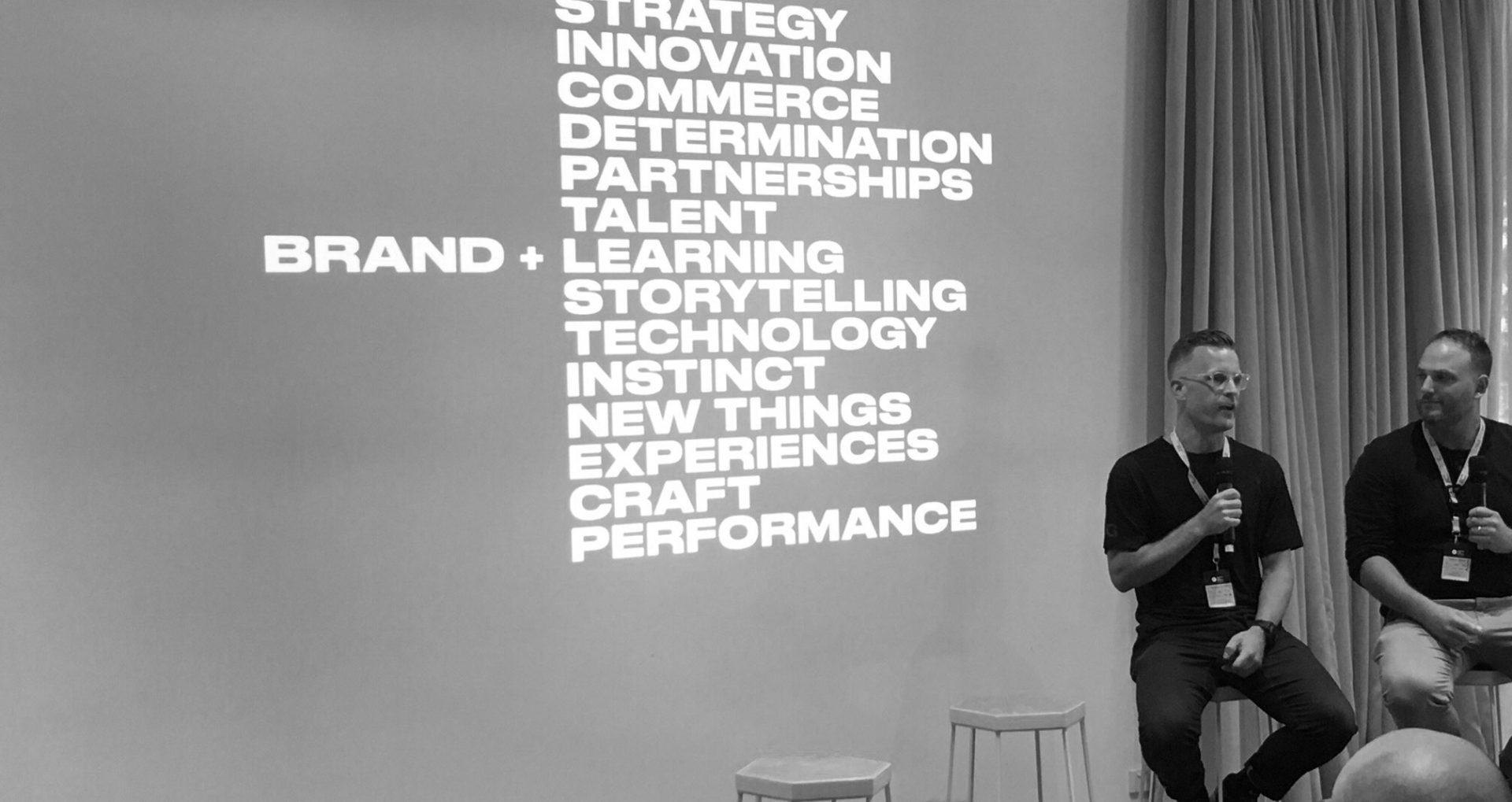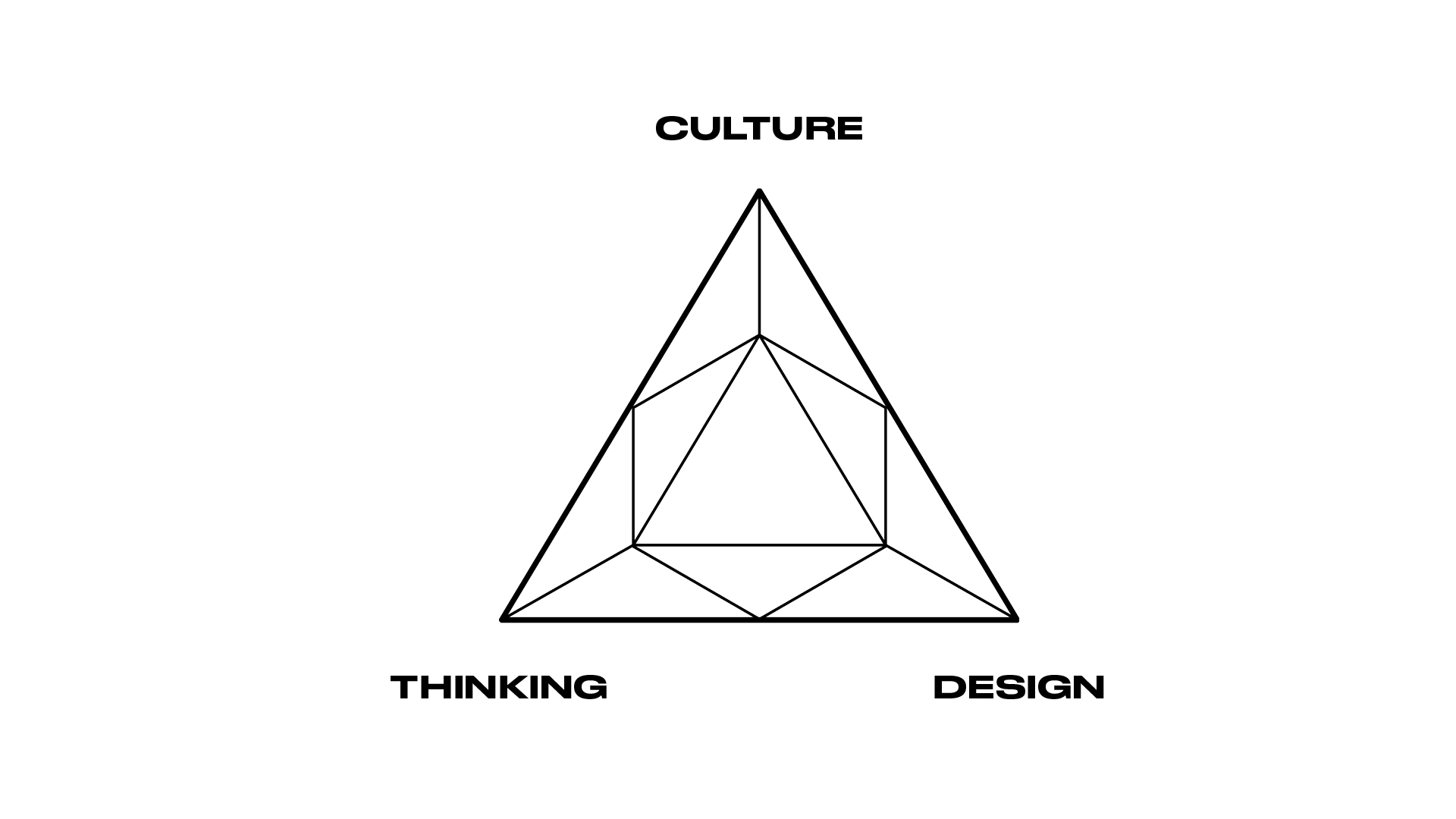Six Points on Brand & Culture
An excerpt from a Pause Fest talk by Jonathan Price and Andy Sargent.
With our heads still buzzing, I wanted to share the top six points of a talk my co-founder and I gave at the Pause Fest Specialist Stage on Wednesday. We recently passed ten years as a studio and have been fortunate to work with some amazing people and brands, so we focussed the talk on the key brand and culture learnings that we’ve accumulated over the journey. I’d love to hear your thoughts.
1. Brand is a filing system for culture
Over the last decade the concept of ‘branding’ has been dramatically redefined. It used to be purely about professionalising corporate image and appealing to consumer desire. Now, in the new media world we live in, brand is the art of connecting purpose, people and culture.
We’re all bombarded with thousands of pieces of data every day across screens, devices and environments. Branding exists to help us interpret and connect with the things that mean something. By providing order and purpose in a sea of noise, effective brands enable us to form genuine connections which evolve our sense of identity and belonging. But not everyone gets this distinction; creating a common cause of disagreement between people working together on brand and marketing.
So here’s the trick: If you are lucky enough to be working on a brand project or are building a brand-led business, don’t let old school thinking trick you into focussing purely on the aesthetics of desire. That can only lead to subjective, shallow arguments which are ultimately fuelled by differences in personal taste. Look up and think deeply about where your brand fits in the sea of noise that surrounds us. Then take your partners on that journey, so that everyone shares a sense of belonging.
2. If you can put a hashtag in front of it, it’s culture
If I said the word ‘culture’ ten years ago, the likely assumption would be that I was talking about national identity or ethnicity. In the global era, national borders have become irrelevant and the concept of ‘culture’ has splintered into an infinite stream of sub-categories within sub-categories. Fashion, politics, celebrity, entertainment and obsessions are the new organising principles. What used to be an obscure subculture could now break out and become a dominant, mass-market theme almost overnight. When you look at subculture on a global scale, there can be as many people into anime, needlecraft or rockabilly as there were in nation states under the old cultural model.
On any niche hashtag you can find millions of words and images, all held together with an invisible cultural thread. This is where humanity becomes community and people find meaning in life. If your brand isn’t pulling on these invisible threads, it’s going to get quickly left behind.
3. Believe data, follow intuition
I know we’re not the first people to suggest data is important for brand and storytelling. Many brands now use hugely powerful brand trackers and audience metrics to plot their path forward. For many people this still might sound like something for big business or technical boffins to care about. But the wealth of simple, powerful tools we all have at our fingertips is a weapon every marketer or brand-builder should be using. And yes that means all creators in the process such as artists, writers and designers. It should inform and inspire your approach – casually arming your decision making process by allowing you to feel empathy for all aspects of a current or potential audience.
So definitely flow data into your process, but don’t let it override your intuition. Something we’ve learned from working with some of the world’s most data rich, sophisticated brands is that they still trust professional intuition as the ultimate decider. The power of a creative thought, an inspired leader or a group working together harmoniously should always win out. The robots aren’t ready to take our jobs on this one just yet!

4. Trade up from a paperclip
In life you get small opportunities every single day. If you are starting a brand, every audience starts with a brave and hopeful first follower. It’s by over-delivering on the small windows of opportunity that you create momentum, which in turn leads to bigger and bigger chances to grow and thrive.
One of our most genuine connections came from a Twitter request to design a t-shirt for a charitable running club. We over-delivered on that tiny request because we believed in the intent of the collaborator and we had faith that doing good things for good people will always take you forward. We had no idea that by chance that fun little project would ultimately lead to us working with one of the world’s most innovative companies. But that’s how the world works. Take the paperclip you are given and trade it up for a stapler. Don’t take anything for granted. You are only ever a hand full of steps away from swapping your paperclip into a house.
5. Make authentic connections
We’ve never been big on self-promotion, mainly because we are alway too busy pouring ourselves into the challenge at hand. Every opportunity has drafted from the last, or from our wider connections, or from catching someone’s eye via the work we have created. And in a funny way, I think this is a huge factor in our success. The world is more connected than any of us can possibly imagine. But authentic connection is getting harder to find. And it’s the thing we all crave the most.
If you have the opportunity to make a connection with a potential client, customer, collaborator or new hire, make it an authentic one. You build a solid brand through solid relationships.
So how do you ensure you foster and develop authentic connection? Be curious, have a generous mindset and seek it in others. Give without expecting anything in return. Follow pursuits that give you different perspectives and help you feel empathy for others. And most importantly, be yourself.
6. Now…let authentic design propel your brand forward
Whether it’s a startup business, a new campaign or a brand refresh project, you’re ultimately competing with every other entity on earth for people’s attention. Now there are many ways to stand out (that’s an article for another day), but so often in an attempt to stand out, you end up misrepresenting the underlying message you are hoping to spread. So how do you balance your objectives, your tactics and your design principles with the cultural context your brand plays in? In a word, it’s authenticity. And it’s through authenticity that you’ll not just earn attention, but also genuine connection and loyalty. That’s the way the world is wired – authenticity rises to the top.
To bring this insight to life we use a way of thinking called Culture, Thinking, Design.

It’s a simple framework that we use as a way of selecting opportunities, seeking out collaborators and creating brands. In a practical project scenario, we start by mapping out the key ‘thinking’, ‘cultural references’ and ‘design ideas’ for any given project. This helps us to arrange our ideas and start to look at how we can join the dots. When we find a simple organising idea that sits in the middle of all three, we know we are onto something. If any of the three elements aren’t covered off in the idea we’re shaping, we know it won’t work so we don’t waste any time pushing ahead until the disconnect is resolved. A great business idea or strategy that’s poorly designed or doesn’t pull on a cultural thread won’t fly. When all three are in balance, you can create an authentic brand or moment that’s going to create real human impact. And that’s how you ensure that your brand always bubbles to the surface.